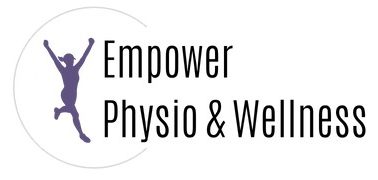Ever noticed your neck and shoulders feeling tight after doing overhead presses? Or maybe you’re experiencing a headache after finishing your upper body workout. Let’s break down what’s going on and how you can correct your overhead press form to get the most out of this exercise.
The neck, head, and shoulders are all intimately connected. It all starts with the shoulder blade, aka the scapula. Think of the scapula as the “core” of your shoulder. It provides support, allows the shoulder to move overhead, and stabilizes it for everyday movements. Some very important muscles make this happen, most notably the serratus anterior and the middle and lower portions of the trapezius muscle.
When these muscles don’t work how they’re supposed to either due to weakness, improper breathing patterns, or inhibition from other muscles being tight, that leaves a few muscles to do the job of the whole shoulder/scapula system. The upper part of the trapezius tries to hike the shoulder upwards to get your arm overhead. It may start subtly, but over time with repetitive and/or heavy lifting, it can turn into a real problem. Other compensations follow and before you know it, your neck feels tight and you’re experiencing headaches.
While you could just stop lifting or reduce your weights to fix the problem, there’s a better long-term solution to correct overhead press form. In nearly every case, improper breathing is a significant underlying cause of headaches and neck tension. When you don’t breathe properly with your diaphragm, the neck and shoulder muscles do the primary work of breathing. Add up to 20,000 breaths per day and you have a significant load on these muscles. Now add on heavy overhead lifting and BOOM that’s where the tension and headaches appear.
There can be other factors that intensify neck tension and headaches like spending too much time in a suboptimal posture, stress, anxiety, or sleeping with unsupportive pillows, but the single best thing you can do is breathe well. Here’s how:
- Lay on your back with your knees bent and your feet flat on the floor.
- Place one hand on your chest and one on your stomach. You want to feel both hands rise, however the hand on your stomach should rise first.
- Form your hands into “C” shapes and place them on either side of your abdomen right at the bottom of your ribs.
- Continue to breathe and feel expansion in the abdomen and ribs 360 degrees to the front, sides, and back.
Spend time on that first step to get your breathing coordinated well. Once you’ve got that down, we can move on to core activation with proper breathing. Inhale fully through your nose. Then, fully exhale through your mouth as if you were fogging up a mirror. As you exhale all the way, you will feel your abdomen contract inwards as the core engages. Sometimes this can be hard to feel at first, so be patient with yourself as you practice it. Make sure to get the full exhale and do not let your stomach puff up at the end of the exhale. If this happens, you’re trying too hard. Do less. With this whole process, less is more.
Once you have a solid breathing and core stabilization foundation, then you can address how your shoulder is being stabilized and moving overhead. It’s best to work with a physical therapist for this so we can identify and correct any compensations along the way. This process takes time and concentration to rewrite a new pattern of moving but stick with it!
Now that you know about the correct overhead press form, I hope you can find ease with this movement. Need some one-on-one help from a physical therapist? Let’s chat.



